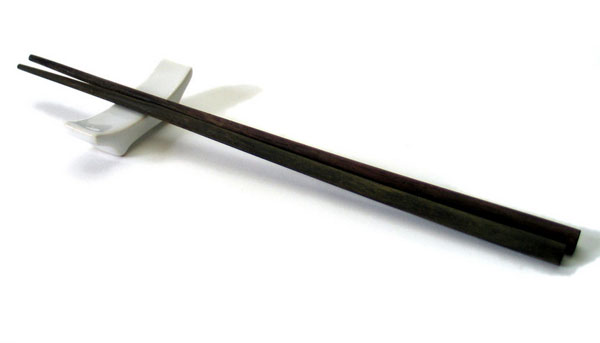

Some say that sitting at a table with a Chinese feast and not knowing how to use chopsticks is like finding oneself on a battlefield and being a poor shot. This is no exaggeration, especially for Chinese food maniacs.
Yet, what's more agonizing for you might be the unfamiliarity of how to use them properly in the presence of native Chinese. So let's check how you can master the art of using the two sticks.
You might want to be aware that manners start the very moment your fingers land on chopsticks. Imagine, for example, you are served a table full of dishes and are not sure what to eat. It's better that you just try the dish next to you than play with your chopsticks and hesitate, since this is considered impolite.
And once you are using chopsticks, remember not to dip them in the dishes and fish around, as this might be a behavior that turns people off.
You might have heard that Chinese people like to chat over meals, and quite a lot of business deals are done over the dining table. So if you happen to find yourself in such a situation, especially on formal occasions, be sure you don't point at others with your chopsticks, as that equals pointing a finger at others.
During your meal, try not to stick the chopsticks upright in the dish or bowl of rice, as doing so is akin to setting up joss sticks for the dead, which can be quite offensive.
Finally when you put your chopsticks down after you finish your meal, be sure to lay them down side by side.
Now you might find that using chopsticks with delicacy is not so easy, it has to be cultivated and practiced over the years. That's why such manners are deemed by many in China as a suggestion of someone's upbringing.
Ok, enough rules. There's actually more about the two sticks that you might want to know, such as their connotations.
Back in the Shang Dynasty (about 1600-1100BC), the Emperor used chopsticks made of ivory. Such chopsticks have been a symbol of wealth and honor. Later chopsticks were made of gold and silver, which were popular among people at the top of the social ranks.
Common people back then used those made from bamboo or wood, as they were cheap to make and easy to use. And people today prefer such chopsticks.
Aside from everyday use, chopsticks are sometimes given as gifts.
As chopsticks often come in pairs, you can send a set to a newly married couple to wish them a happily ever after. You could also send them to friends and teachers, as chopsticks are long, which signifies long and lasting friendship. You could even send them to your business partners to mean that you hope you are like two sticks working together as one, sharing a longstanding partnership.
Some people like to collect chopsticks, which are decorated with inscriptions, poems, drawings or mosaics and the like. In Shanghai, you can even find a chopsticks museum that challenges your wildest imaginations.
The owner, Lan Xiang, has been a devoted collector for 30 years. With his help, the Shanghai Chopsticks Culture Promotion Commission is planning to apply for chopsticks to be added to the list of municipal intangible cultural heritage.
"It's important for us to rediscover the cultural value of chopsticks," says Cai Fengming, deputy secretary of the Shanghai Academy of Social Sciences, East Asia Culture Research Center.
According to Cai, chopsticks, which are prevalent in east Asia, are also a bond of Southeast Asian culture.

Presented by Chinadaily.com.cn Registration Number: 10023870-7
Copyright © Ministry of Culture, P.R.China. All rights reserved